Your cart is currently empty!
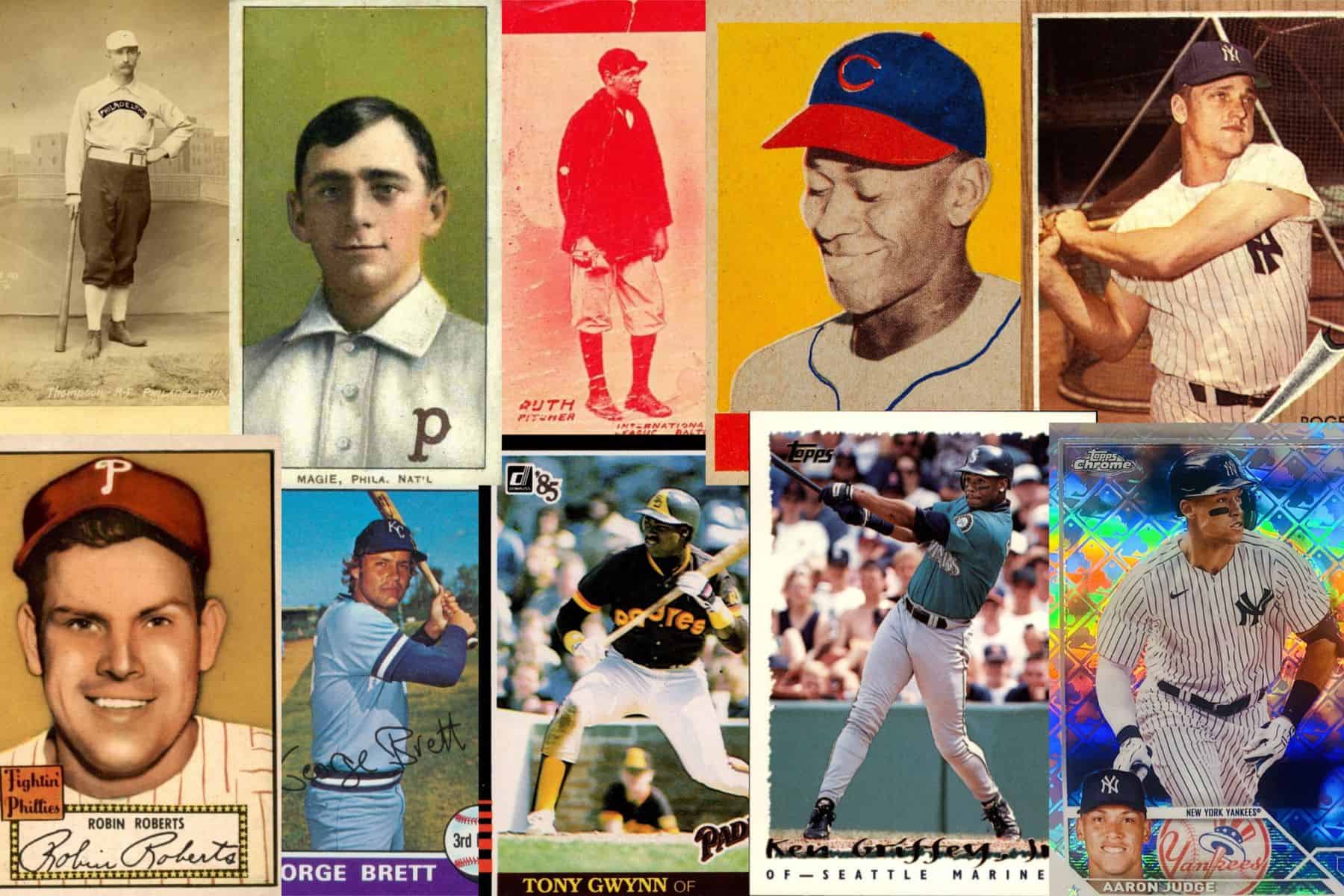
Baseball cards are more than just pieces of cardboard; they are time capsules of America’s favorite pastime. From the early days of basic lithography to the high-tech, customizable cards of today, the evolution of baseball card printing reflects not only the changes in technology but also the changing landscape of the sport, the card collecting hobby, and the wider world of printing and design. This article explores the fascinating journey of baseball card printing from 1900 to the present day.
1900-1949: The Early Days of Lithography
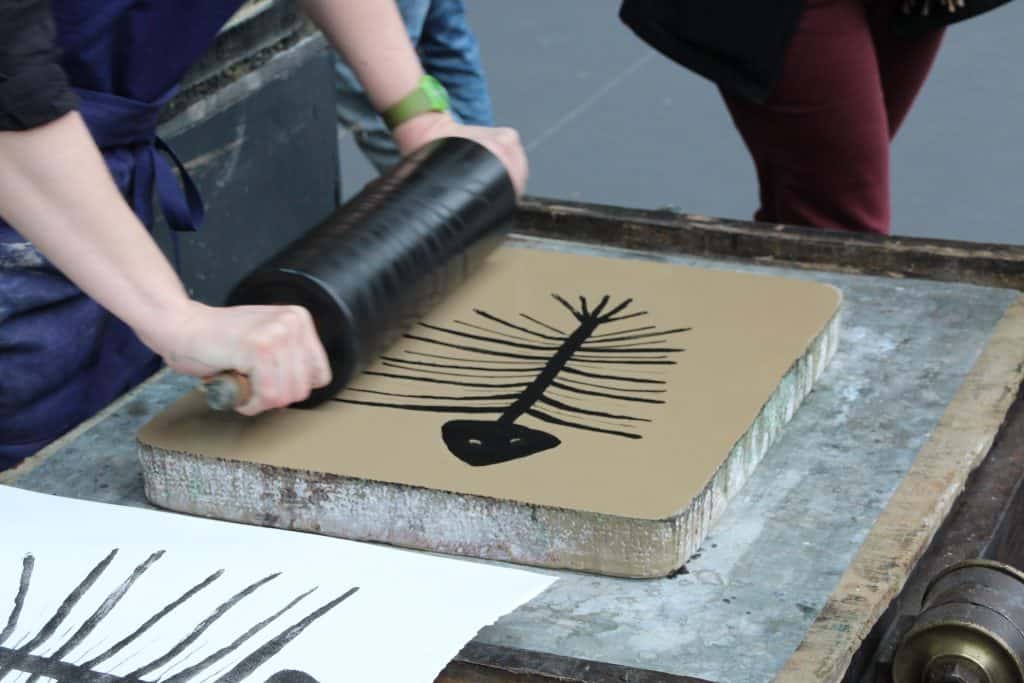
The early 20th century marked the birth of baseball cards. These cards were produced using lithography, a manual and labor-intensive process that involved carving images onto metal plates and transferring them onto paper or cardboard. This method allowed for basic, black and white designs that were, by today’s standards, rather simple. Due to the limitations of the technology, the images were often grainy and not particularly detailed.
One of the most iconic sets from this era is the T206 series, which was produced from 1909 to 1911. These cards featured colorful backgrounds, but the printing technology of the time limited the range of colors, resulting in somewhat muted and grainy images. Despite these limitations, T206 cards have become highly sought after by collectors, and some individual cards from the set have sold for astronomical sums at auction.
Some baseball cards from this era appear blurry or feathered. The quality of an older lithograph can vary depending on several factors, including the skill of the artist or printer, the condition of the printing plate or stone, and the preservation of the print over time. The condition of the lithographic plate or stone used for printing can deteriorate over time, leading to loss of image sharpness. This can be caused by wear and tear, scratches, or other damage. When producing a high volume of baseball cards, plate wear can be a factor.
The level of skill and expertise of the person printing the lithograph can also greatly influence the quality of the final print. A skilled printer can produce a sharp and detailed image, while a less skilled printer might produce a blurrier result. The type of paper and ink used in the printing process can also impact the final appearance of the lithograph. Low-quality materials can lead to less sharp and more blurry prints.
1950-1979: Post-War Advances in Offset Printing
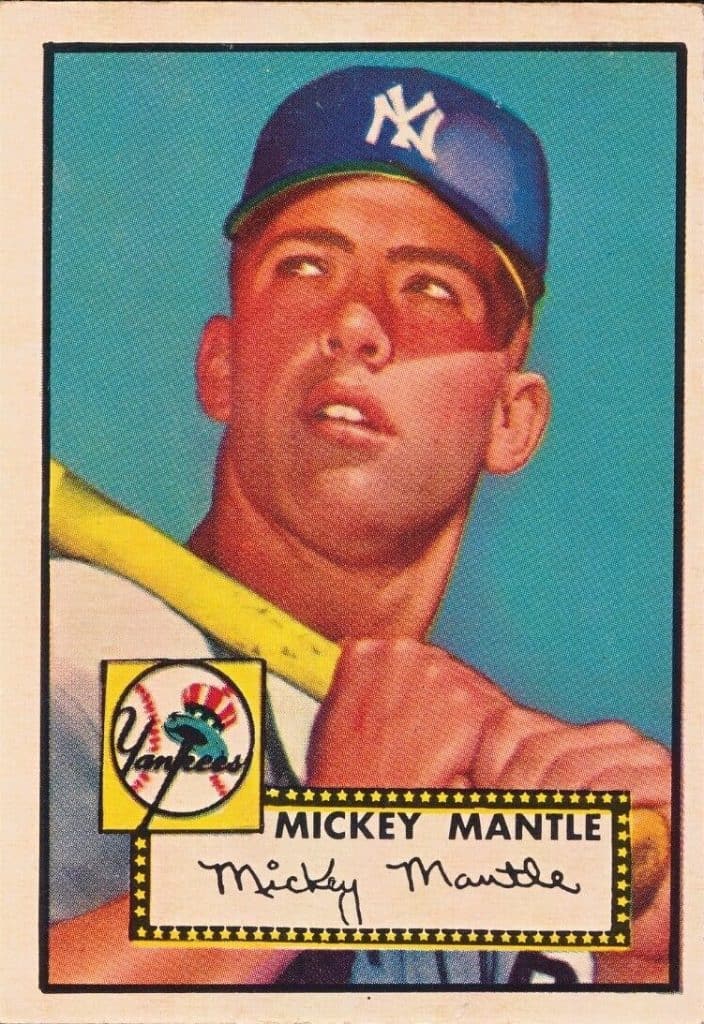
The post-World War II era brought significant advancements in printing technology, particularly with the widespread adoption of offset printing. This process allowed for higher-quality and more colorful baseball cards, representing a significant step forward from the lithography era. Companies like Topps, Bowman, and Fleer emerged as major players in the industry during this time, with Topps eventually becoming the dominant force.
Topps’ 1952 set is considered a landmark in baseball card history. These cards were printed using a combination of offset printing and an improved color process, resulting in clearer, more vibrant images. Because text on offset-printed cards generally appears sharp, smooth, and well-defined, card designs also became more elaborate, incorporating team logos, statistics, and player biographies on the card backs.
Offset printing typically produces a distinct dot pattern when you examine the card closely. This pattern is a series of tiny dots that make up the image. Offset-printed cards will have a consistent dot pattern throughout the card. Offset printing is capable of producing full-color cards with a wide range of colors. Look for cards with vibrant and detailed images, as this is a common characteristic of offset printing.Offset-printed cards are often produced on thicker cardstock or paper too, which gives them a sturdy and professional feel.
The images on these cards were clearer, and the designs were more varied, giving collectors a more enjoyable experience. This era laid the foundation for modern card design, with high-quality imagery and a range of card back information that made the hobby not just about collecting pictures but also about learning and connecting with the players and teams.
1980-1999: The Era of Collecting and Mass Production
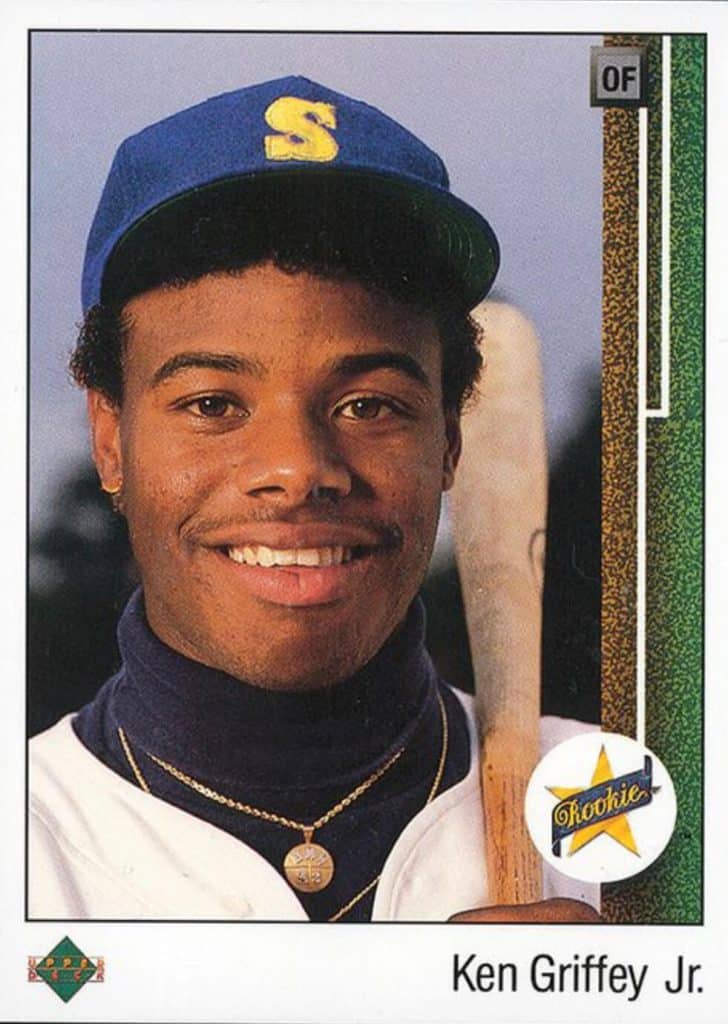
The 1980s and 1990s witnessed an explosion in baseball card collecting. Collectors believed that these cards could become valuable investments, leading to a surge in production and innovation. This era saw the introduction of various subsets, inserts, and special editions, as well as innovations like holographic and foil-stamped cards.
One notable development was the introduction of the Upper Deck brand in 1989. Upper Deck’s cards featured high-quality photography, glossy finishes, and holograms on the back, making them stand out from their competitors. This period also saw the rise of licensed baseball card sets from companies like Donruss and Score, offering collectors a variety of options.
As the market continued to grow, companies experimented with limited edition cards, autographed cards, and cards featuring pieces of game-used memorabilia. These new elements added an element of rarity and excitement to collecting, as collectors aimed to find the rarest and most valuable cards in each set.
Additionally, the emergence of e-commerce transformed the way collectors bought and sold cards. Online marketplaces like eBay made it easier to trade, buy, and sell cards worldwide, reducing the reliance on traditional card shops and trading events.
2000-2019: The Digital Age and Scarcity
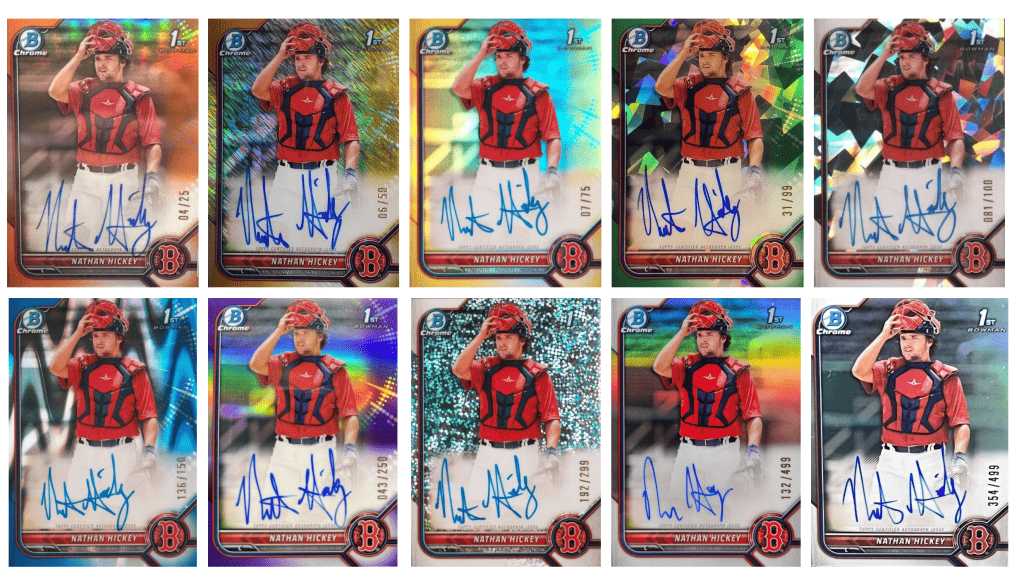
The turn of the 21st century brought further changes to the baseball card industry. Digital technology played a significant role in card production, enabling companies to produce cards with embedded microchips, holograms, and other interactive features.
This period in card history saw the introduction of certified autograph and relic cards. These cards include autographs and embedded memorabilia, and sometimes both. It adds an exciting dimension to the hobby and gives collectors something else to pursue. These types of cards bring fans closer to the game. Popular sets include Topps Triple Threads and Topps Authentics.
Limited edition cards became a prominent feature of modern card sets. Cards were numbered to specific quantities, creating a sense of scarcity that drove the market. The concept of “parallels” – cards with different colors, designs, or other variations – also gained popularity, giving collectors more options to chase their favorite players and teams. Today, most major card releases include parallels and serial numbered cards, often in combination, to feed the interest in these types of collectibles.
In addition to physical cards, the baseball card hobby has undergone a transformative shift with the advent of Non-Fungible Tokens (NFTs), entering the digital age of collecting. NFTs are unique, blockchain-based digital assets that certify ownership and authenticity. In the context of baseball cards, NFTs allow collectors to own and trade unique, virtual representations of cards. These digital cards often feature stunning artwork, animations, and detailed player statistics, enhancing the collecting experience in the digital realm. NFT-based digital baseball cards have also opened up exciting possibilities for creators and players to benefit directly from the sales and trading of their virtual cards, offering a potential revenue stream for both athletes and card designers.
Furthermore, NFTs have introduced a new level of scarcity and provenance to the world of baseball card collecting. Each digital card’s ownership is verifiable on the blockchain, and the limited quantity of NFTs available for specific cards adds a layer of exclusivity. However, the intersection of digital cards and NFTs has also sparked debates around the environmental impact of blockchain technology, as well as questions regarding the long-term value and authenticity of these virtual collectibles. Nevertheless, the convergence of digital baseball cards and NFTs has undeniably disrupted and expanded the hobby, offering collectors a new way to engage with their passion in the digital age.
Present Day: High-End Printing and Customization

In the present day, baseball card printing continues to evolve. Printing technology has reached new heights in terms of image quality. Modern cards feature incredibly detailed and high-resolution images, with sharp colors and intricate designs. The use of technology such as UV coating and embossing has elevated the overall aesthetic of the cards.
Customization has become a major trend, with companies offering personalized cards. Collectors can create cards with their own images and designs, allowing for unique and sentimental collectibles. This trend has opened up new possibilities for personalizing gifts and commemorating special moments in the world of baseball.
Traditional card collecting hasn’t been left behind in the wake of digital innovations. Retro-themed sets and reprints of iconic cards from the past continue to be popular. Many collectors enjoy the nostalgia of these cards, which harken back to earlier eras of baseball.
The wider accessibility of the internet has also allowed collectors to connect with one another, share their collections, and discuss the latest developments in the hobby. Online forums, social media groups, and blogs provide spaces for enthusiasts to engage with one another, learn about card values and trends, and even trade or sell cards.
Conclusion
The evolution of baseball card printing from 1900 to the present is a testament to the intersection of technology, design, and popular culture. The printing processes have come a long way from the early days of lithography to the high-tech, customizable cards of today. While the ways in which collectors acquire and enjoy their cards have transformed, the enduring appeal of these little pieces of cardboard remains a testament to their enduring significance in the world of sports and memorabilia.
Whether you’re a seasoned collector or just getting started, the rich history and ongoing evolution of baseball cards provide a captivating backdrop to the hobby. Collecting baseball cards is not just about amassing images of your favorite players; it’s about preserving the history and passion of the game, connecting with fellow collectors, and continuing a tradition that has spanned more than a century. The future of baseball card printing is as exciting and unpredictable as the sport itself, making each new card set a source of anticipation and discovery for collectors of all ages.
Tags:
Share:
